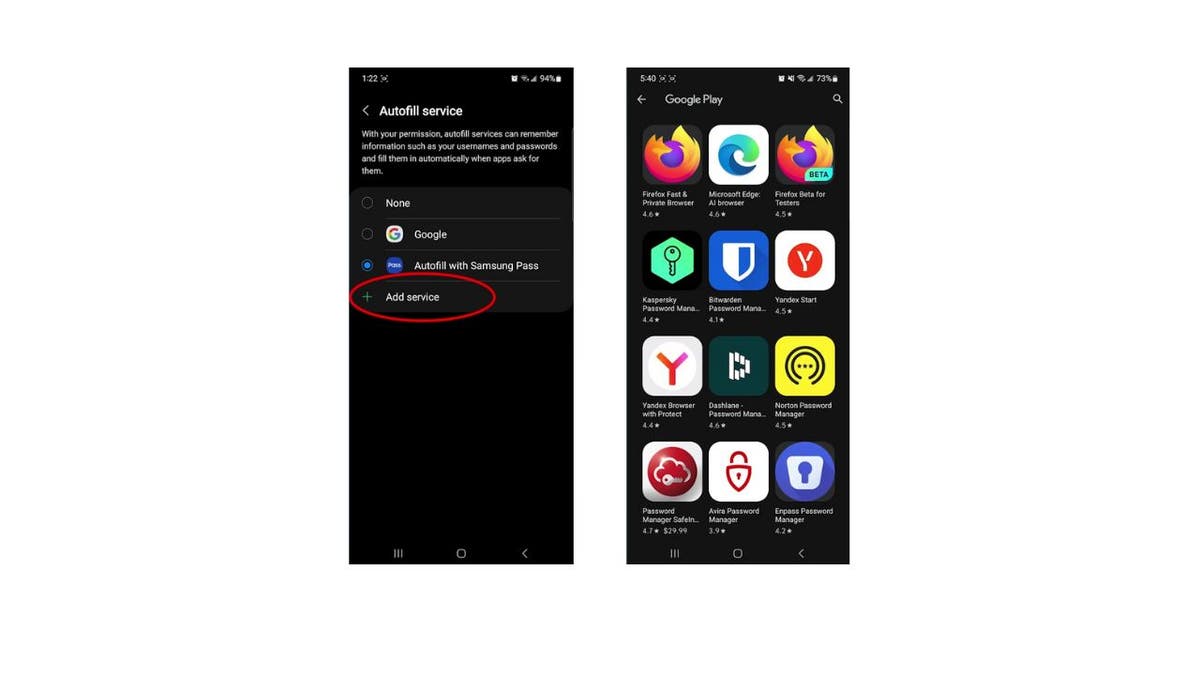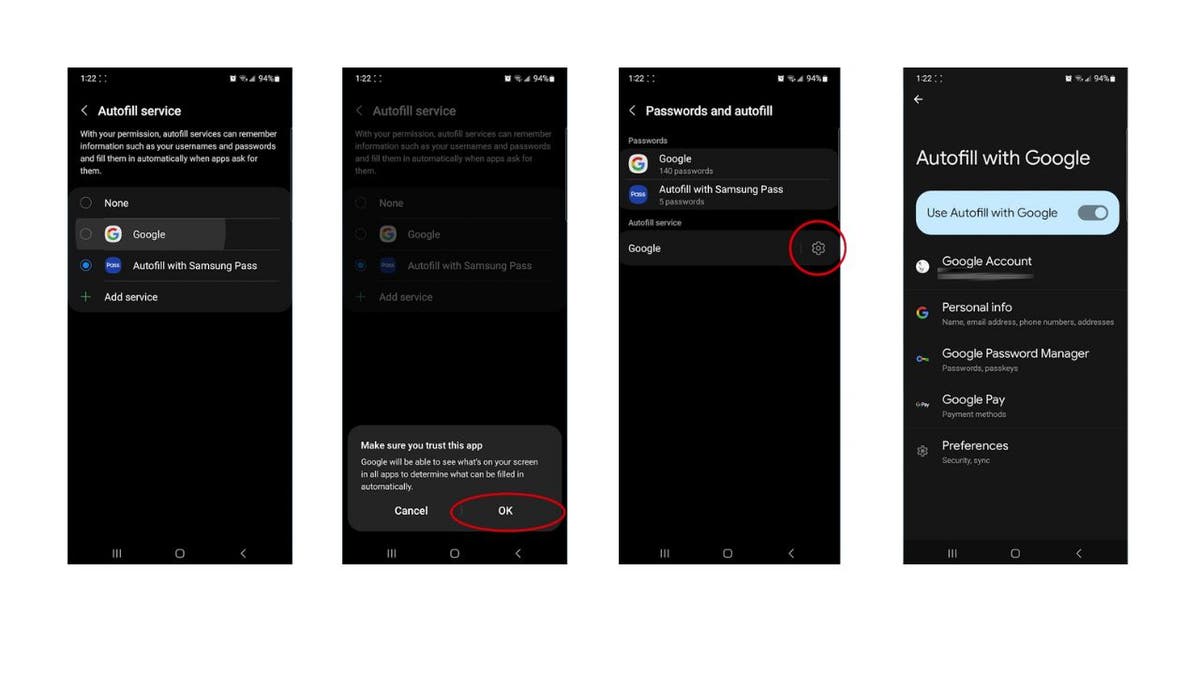Technology
The CFPB wants to rein in data brokers
/cdn.vox-cdn.com/uploads/chorus_asset/file/25299198/STK453_Privacy_A_CVirginia.jpg)
The Consumer Financial Protection Bureau wants to propose new regulations that would require data brokers to comply with the Fair Credit Reporting Act. In a speech at the White House earlier this month, CFPB Director Rohit Chopra said the agency is looking into policies to “ensure greater accountability” for companies that buy and sell consumer data, in keeping with an executive order President Joe Biden issued in late February.
Chopra said the agency is considering proposals that would define data brokers that sell certain types of data as “consumer reporting agencies,” thereby requiring those companies to comply with the Fair Credit Reporting Act (FCRA). The statute bans sharing certain kinds of data (e.g., your credit report) with entities unless they serve a specific purpose outlined in the law (e.g., if the report is used for employment purposes or to extend a line of credit to someone).
The CFBP views the buying and selling of consumer data as a national security issue, not just a matter of privacy. Chopra mentioned three massive data breaches — the 2015 Anthem leak, the 2017 Equifax hack, and the 2018 Marriott breach — as examples of foreign adversaries illicitly obtaining Americans’ personal data. “When Americans’ health information, financial information, and even their travel whereabouts can be assembled into detailed dossiers, it’s no surprise that this raises risks when it comes to safety and security,” Chopra said. But the focus on high-profile hacks obscures a more pervasive, totally legal phenomenon: data brokers’ ability to sell detailed personal information to anyone who’s willing to pay for it.
Citing the February executive order, Chopra noted that data brokers can sell data to “countries of concern, or entities controlled by those countries, and it can land in the hands of foreign intelligence services, militaries, or other companies controlled by foreign governments.” In other words, instead of hacking hotel chains and credit reporting bureaus to get access to millions of Americans’ personal data, intelligence agencies can buy information that is just as detailed, if not more so.
“For example, data brokers can facilitate the targeting of individuals by allowing entities to purchase lists that match multiple categories, like ‘Intelligence and Counterterrorism’ with ‘substance abuse,’ ‘heavy drinker,’ or even ‘behind on bills,’” Chopra said. “In other contexts, entities can purchase records for pennies per person, allowing relatively small investments to be leveraged into mass collection.” Put another way, the White House is concerned that the US’s adversaries — most explicitly, China — can use Americans’ data to identify targets for blackmail and surveillance.
The government is growing increasingly concerned about foreign governments’ access to Americans’ data. In March, the House passed a bill that would prohibit data brokers from selling Americans’ personally identifiable information to “any entity that is controlled by a foreign adversary.” Under the Protecting Americans’ Data from Foreign Adversaries Act, data brokers would face penalties from the Federal Trade Commission if they sell sensitive information — like location or health data — to any person or company based in certain countries. The Senate has yet to vote on the bill.
US government agencies, too, rely on data brokers to keep an eye on Americans. In 2022, the American Civil Liberties Union published a series of documents that showed how the Department of Homeland Security used location data to track the movement of millions of cell phones — and the people who own them — within the US.

Technology
Waymo issues software and mapping recall after robotaxi crashes into a telephone pole
/cdn.vox-cdn.com/uploads/chorus_asset/file/22309273/vpavic_4412_20210111_0003.jpg)
Waymo is issuing a voluntary software recall after one of its driverless vehicles collided with a telephone pole in Phoenix, Arizona, last month, the company said. The vehicle was damaged, but no passengers or bystanders were hurt in the incident.
The company is filing the recall with the National Highway Traffic Safety Administration (NHTSA) after completing a software update to 672 vehicles — the total number of driverless-capable vehicles in Waymo’s fleet. The update corrects an error in the software that “assigned a low damage score” to the telephone pole, and updates its map to account for the hard road edge in the alleyway that was not previously included.
This is Waymo’s second recall ever
This is Waymo’s second recall ever, after two minor collisions prompted a recall of 444 vehicles last February. And it comes at a time of increased regulatory scrutiny of the driverless vehicle industry, in which federal investigators are probing almost all the major companies operating autonomous vehicles in the US.
The incident that prompted the latest recall took place on May 21st in Phoenix. According to local reports, an unoccupied Waymo vehicle was driving to a passenger pickup location through an alley that was lined on both sides by wooden telephone poles. The poles were not up on a curb but level with the road and surrounded with longitudinal yellow striping to define the viable path for vehicles. As it was pulling over, the Waymo vehicle struck one of the poles at a speed of 8mph, sustaining some damage, the company said.
The passenger who was waiting for the vehicle didn’t witness the crash but did recall hearing it. “It never made it to pick us up,” Jericka Mitchell told 12News.
Waymo’s recall isn’t a recall in the traditional sense. It’s not taking its vehicles off the road for repairs or maintenance. Much like Tesla’s software recalls, the company can simply push an over-the-air update to all the affected vehicles and then continue to operate on public roads after the new software and maps have loaded.
“We have already deployed mapping and software updates across our entire fleet”
“We have already deployed mapping and software updates across our entire fleet, and this does not impact our current operations,” Waymo spokesperson Katherine Barna said in a statement. “As we serve more riders in more cities, we will continue our safety first approach, working to earn trust with our riders, community members, regulators, and policymakers.”
Waymo is trying to be proactive about its safety — especially as it relates to incidents in which its own vehicles are clearly at fault. The company is under investigation by NHTSA for over two dozen incidents involving its driverless vehicles, including several “single-party” crashes and possible traffic law violations. Several incidents involved crashes with stationary objects, much like the May 21st crash with the telephone poll.
Technology
How to easily enable, disable autofill on your Android

Let’s be real, having your passwords automatically filled in can be a real time-saver. But it can also be a bit unnerving when your phone seems to know your log-in credentials a little too well.
Love it or hate it, Android’s autofill password feature is here to stay. The good news? You’ve got full control over how it works.
If you have an iPhone and you want to enable and use its incredibly smart password autofill feature, you can learn how by clicking here.
GET SECURITY ALERTS, EXPERT TIPS – SIGN UP FOR KURT’S NEWSLETTER – THE CYBERGUY REPORT HERE
A man on his Android (Kurt “CyberGuy” Knutsson)
How to enable autofill on your Android
Here’s how to get a handle on this automatic feature.
Settings may vary depending on your Android phone’s manufacturer.
- First things first, we’re going to swipe down and tap Settings on your Android device.
- Now, scroll down to General Management, tap it.
- Scroll down again to select Passwords and Autofill or Auto Fill Service, whatever your device calls it.
- Under Autofill Services, you’ll see the current active service you’re using to manage your passwords; tap on it.
WHAT IS ARTIFICIAL INTELLIGENCE (AI)?

Steps to enable autofill on Android (Kurt “CyberGuy” Knutsson)
- Now, you’ll get a list of all the available services.
- Selecting Add Service will give you a whole new world of potential apps and add-ons to download and use for password management.

Steps to enable autofill on Android (Kurt “CyberGuy” Knutsson)
HOW TO REMOVE YOUR PRIVATE DATA FROM THE INTERNET
How to set up and customize your password manager
- When you have the service you want to use, tap it to make it your active password manager.
- Press OK to allow your phone to trust that service.
- Now, that service is going to fill in whatever password you have it set to fill.
- If you want to go and change the setting on your current service, go back to the active service screen and tap the gear icon next to your current active service.
- This will bring up the settings to whatever service you are using where you can manage specific stored passwords and how they are used.
TOP ANDROID PHONES OF 2024

Steps to set up and customize your password manager (Kurt “CyberGuy” Knutsson)
Remember, it’s important to use strong, unique passwords for each site and enable two-factor authentication where possible for added security. Also, consider using a password manager to generate and store complex passwords.
BEST ACCESSORIES FOR YOUR ANDROID
The latest autofill capabilities
As of June 2024, Google has rolled out some nifty new features for Android’s autofill capabilities. The biggest game-changer? You can now sync your passwords across all your Android devices, making it easier than ever to keep your log-ins consistent and secure.
Plus, there’s a new “Suggest Strong Passwords” option that’ll generate ultra-secure passwords for you whenever you’re creating a new account.
KURT’S BEST FATHER’S DAY GIFT GUIDE 2024
To utilize the new autofill features on your Android device, you can follow these general steps:
- Open your device’s Settings app and navigate to the System section.
- Tap on Languages & Input, then select Advanced to find the Autofill service option.
- In the Autofill service, you should see the Google option. Select it to enable Google as your autofill service.
- To sync passwords across devices, ensure you’re signed in to the same Google account on all your Android devices. This will allow autofill to access passwords saved to your Google account.
For the Suggest Strong Passwords feature, whenever you create a new account or change a password, the autofill service should prompt you with a suggested strong password. You can choose to use this suggestion or create your own.
8 ACCESSIBILITY TIPS TO MAKE LIFE EASIER USING YOUR ANDROID
Kurt’s key takeaways
At the end of the day, Android’s autofill password feature is all about convenience and security. Sure, it might take a little getting used to, but once you’ve got it set up just the way you like it, you’ll wonder how you ever lived without it. Just remember to keep your password manager up to date and your device secure, and you’ll be sailing smoothly through all those log-in screens.
How has the Android autofill feature impacted your online experience and what improvements would you suggest for its future updates? Let us know by writing us at Cyberguy.com/Contact.
For more of my tech tips and security alerts, subscribe to my free CyberGuy Report Newsletter by heading to Cyberguy.com/Newsletter.
Ask Kurt a question or let us know what stories you’d like us to cover.
Follow Kurt on his social channels:
Answers to the most asked CyberGuy questions:
Copyright 2024 CyberGuy.com. All rights reserved.
Technology
Elon Musk has unusual relationships with women at SpaceX, WSJ reports
/cdn.vox-cdn.com/uploads/chorus_asset/file/24090206/STK171_VRG_Illo_3_Normand_ElonMusk_03.jpg)
Elon Musk had a sexual relationship with a former SpaceX intern, who he later hired onto his executive team, according to The Wall Street Journal. He also had a sexual relationship with a second employee. And a third woman alleged that Musk asked her several times to have his children; she refused. He then denied her a raise and complained about her performance.
One of the women who Musk had a sexual relationship also drew the ire of SpaceX President Gwynne Shotwell, who accused her of having an affair with Shotwell’s husband. When the woman reported this to HR, HR told Shotwell. “Shotwell told the HR department at SpaceX that she wanted the woman removed from the office of the chief executive,” The Wall Street Journal wrote.
The Journal’s article cites text messages, emails, and other documents. It is based on interviews with more than 48 people, including friends and family members of the women, as well as former employees.
Musk didn’t reply to WSJ’s requests for comment. Shotwell said the WSJ’s request for comment “paint[s] a completely misleading narrative” of what working for SpaceX is like, and that the WSJ story doesn’t reflect SpaceX’s culture. She also said that SpaceX investigates all harassment complaints and responds appropriately.
-

 Movie Reviews1 week ago
Movie Reviews1 week agoMovie Review: The Eternal Sunrise –
-

 Politics1 week ago
Politics1 week ago5 things to know about Hunter Biden trial
-

 Fitness1 week ago
Fitness1 week agoThe five simple exercises that are crucial in midlife
-

 World1 week ago
World1 week agoChina denies fuelling Russia-Ukraine war tensions, says it supports peace
-

 Politics1 week ago
Politics1 week agoTrump joins TikTok, the app he once tried to ban as president
-

 World1 week ago
World1 week agoBusinesswoman Halla Tomasdottir set to become Iceland’s next president
-

 World6 days ago
World6 days agoEconomy, migration: Voters' main concerns ahead of elections
-

 World1 week ago
World1 week agoWill liberals be biggest losers of EU election?














